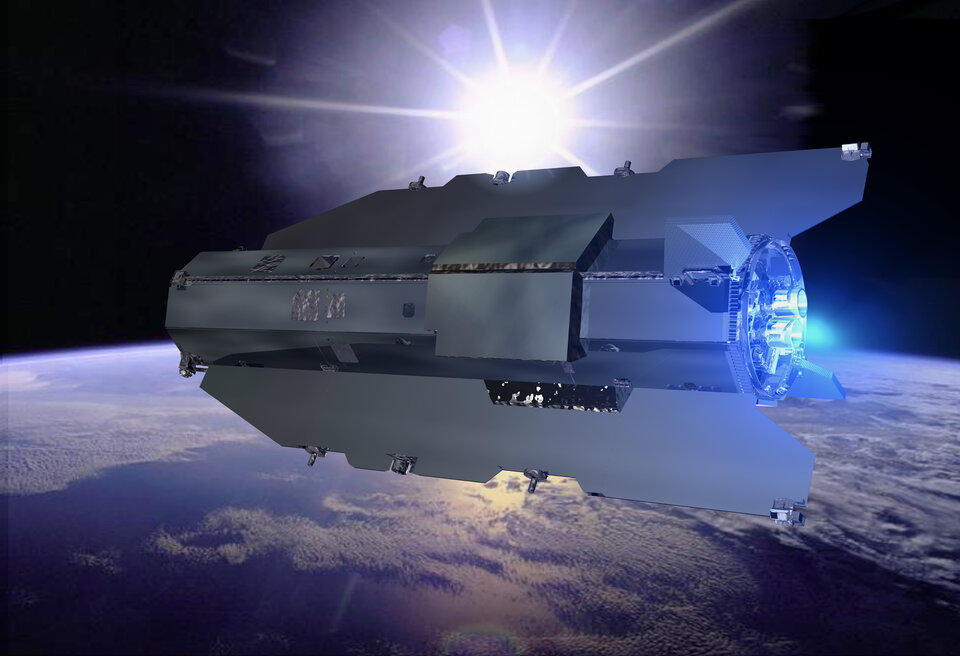Contract signed for GOCE data analysis and modelling
Yesterday, an important milestone was reached in the development of ESA's GOCE (Gravity field and steady-state Ocean Circulation Explorer) mission, when a contract, worth €7.8 million, was signed between ESA and the Institute for Astronomical and Physical Geodesy (IAPG) from the Technical University of Munich.
The contract means that the scientific data resulting from the GOCE mission will be analysed by a consortium of 10 European universities and research institutes led by the IAPG. The consortium will then use the data to produce an unprecedented high-accuracy and high spatial-resolution global model of the Earth's gravity field and of the geoid. Scientists from Switzerland, Germany, Denmark, the Netherlands, Austria, Italy and France will all cooperate in this project. The work will be managed by IAPG as prime contractor with the help of the National Institute of Space Research in the Netherlands (SRON).

The ceremony took place at the Technical University in Munich, Germany on 26 October when the contract was signed by Prof. Wolfgang Herrmann the President of the Technical University of Munich and Dr. Volker Liebig ESA's Director of Earth Observation. Subsequently, all the project partners signed their contracts with the prime contractor.

GOCE, due for launch in 2006, is the first Earth Explorer Core mission to be developed as part of ESA's Living Planet Programme. This mission, entirely dedicated to the exploration of the Earth's gravity field, will significantly advance our knowledge in areas of solid-Earth physics, geodesy, oceanography as well as climate-change research.

The primary instrument is the newly developed gravity gradiometer. In order to attain the required sensitivity it is combined with precise GPS tracking, and active drag-free control of the spacecraft. Because the gravitational signal is stronger closer to the Earth, GOCE has been designed to fly in a particularly low orbit – at an altitude of just 250 km. The satellite has no mechanical moving parts since it has to be completely stable and rigid to ensure the acquisition of true gravity readings.
The signing of the contract for the 'GOCE High-Level Processing Facility' ensures that the data acquired by the mission will be expertly translated into valuable information that will further our understanding of the planet.















 Germany
Germany
 Austria
Austria
 Belgium
Belgium
 Denmark
Denmark
 Spain
Spain
 Estonia
Estonia
 Finland
Finland
 France
France
 Greece
Greece
 Hungary
Hungary
 Ireland
Ireland
 Italy
Italy
 Luxembourg
Luxembourg
 Norway
Norway
 The Netherlands
The Netherlands
 Poland
Poland
 Portugal
Portugal
 Czechia
Czechia
 Romania
Romania
 United Kingdom
United Kingdom
 Slovenia
Slovenia
 Sweden
Sweden
 Switzerland
Switzerland





























